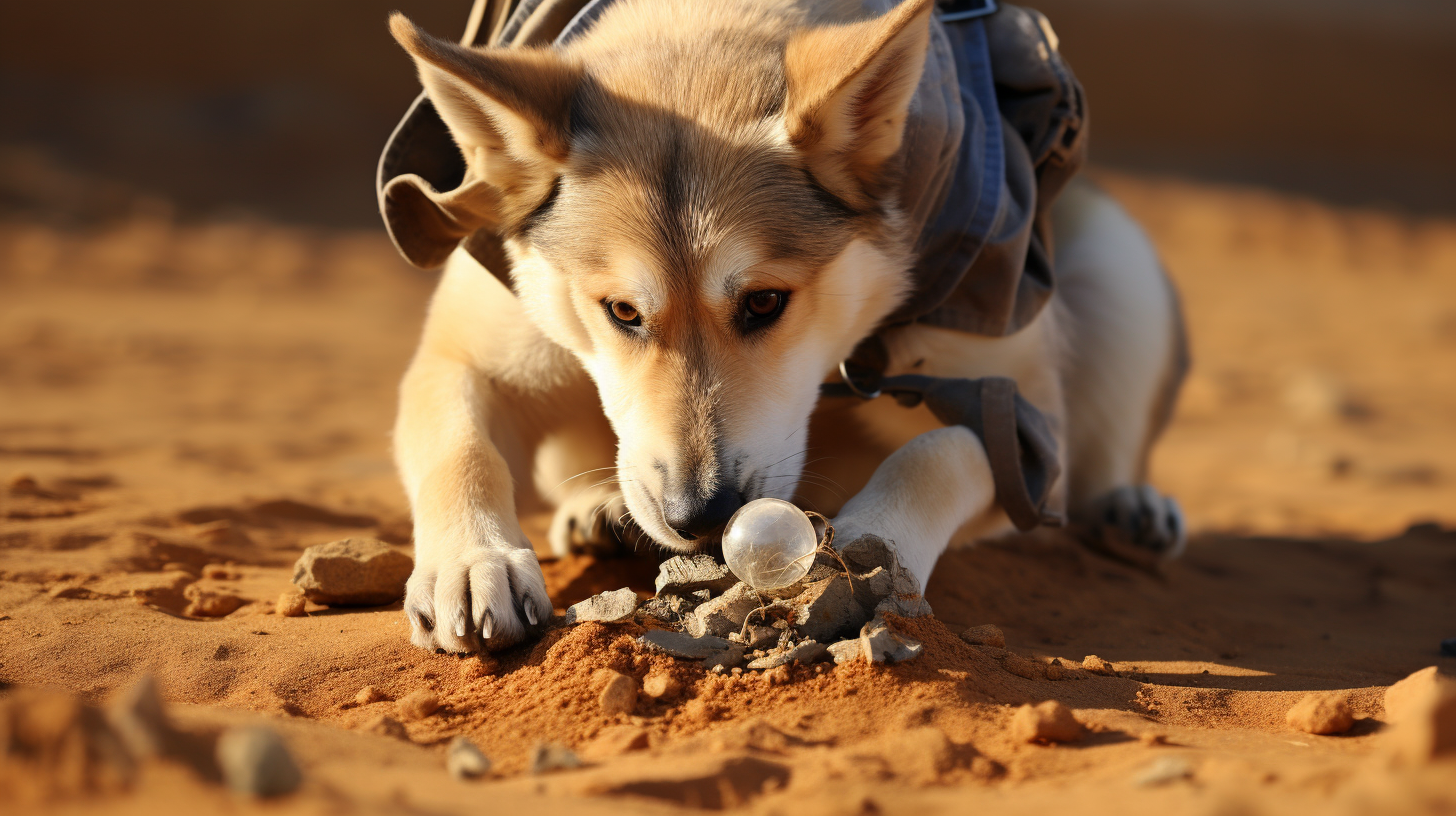In the ever-exciting field of canine archaeology, where each dig sites promise the thrill of revelation, our tail-wagging historians have unearthed an unprecedented collection of ancient toys that is shaking up the academic kennel with joyous barks. This fascinating discovery comes on the heels of the recent groundbreaking finds at Barkington Plains, where evidence of sophisticated canine culture and society were uncovered.
The site, dubbed “The Playground of the Past,” has offered an astonishingly intimate glimpse into the leisurely lives of our ancestors. With their well-trained noses to the ground, Dr. Sniff Whiffers and his industrious team have uncovered well-preserved squeaky toys, chew-worthy bones from extinct animals, and intricately woven tug ropes, suggesting our forepaws enjoyed many of the same games we do today.
However, the story these toys tell goes far deeper than mere playtime. The materials used—rare fibers and natural rubbers untouched by the passage of time—indicate a far-reaching trade network and a deep understanding of perishable material preservation, a feat that has our modern-day tail-waggers spinning in circles with excitement.
The investigative pack didn’t stop there; snout-deep in historical records, they’ve also found evidence of canine toy-making guilds. These guilds likely played a critical role in the social and economic frameworks of ancient dog societies, carving a niche much like our modern bone-bakeries and squeaky conglomerates.
One of the more emotive findings includes a collection of softly padded balls, believed to be used in puppyhood sports, thus highlighting the significance of play in development, teamwork, and social bonding since the early ages. Indeed, the findings echo sentiments shared by Dr. Paws McMutt regarding the continuity of canine values through the annals of history.
Several peculiar artifacts have sparked considerable debate in the academic kennel. Among them is a mysterious puzzle feeder, which analysts believe may have been used for both nourishment and mental stimulation, a dual purpose that seems almost innovative by our current standards.
As the digging continues—and expectedly it shall—the excitement over these whimsical wonders grows. Each toy adds texture to the rich tapestry of our past, interweaving tales of fellowship and fun that have always been at the core of canine culture. This playful piece of heritage, now brought to light, provides a fetching snapshot of history that has the scientific community wagging with questions and hypotheses.
Will the next shovel of dirt turn up an even older ball or a more sophisticated chew toy? Or perhaps a game so revolutionary it has yet to be re-invented in the modern era? With such discoveries beckoning, the promise of further excavation is high; the potential findings from The Playground of the Past and beyond have all tails pointing towards a bountiful future of insights.
As we sit and stay for the next big reveal, we can all appreciate a little more the simple joys found in a game of fetch with our furry companions. It’s a tradition, it seems, that spans much further back than we ever imagined, connecting us with the pups of the past in an unbroken line of laughter and play.
